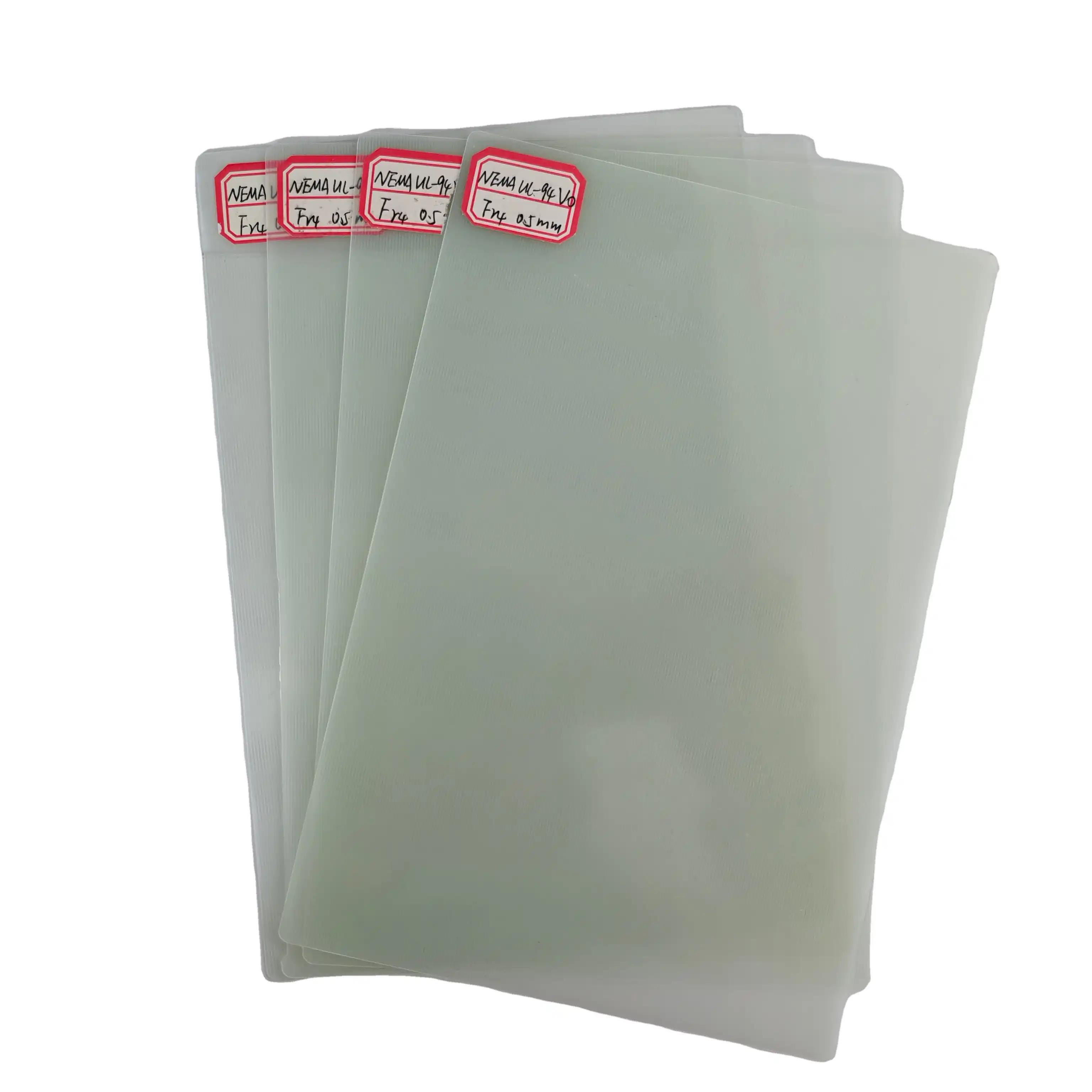What are the application characteristics of insulation sheet?
2024-12-30 16:35:53
Insulation sheets are versatile materials designed to provide thermal, electrical, and acoustic insulation in various applications. These sheets exhibit exceptional properties such as low thermal conductivity, high dielectric strength, and sound-absorbing capabilities. The application characteristics of insulation sheets encompass their ability to maintain temperature differentials, prevent electrical current flow, and reduce noise transmission. They are adaptable to diverse environments, resistant to moisture and chemicals, and can be easily cut and shaped to fit specific requirements. Insulation sheets find extensive use in construction, automotive, aerospace, and industrial sectors, offering energy efficiency, safety, and improved performance across a wide range of products and systems.
Thermal Insulation Properties and Applications
Heat Retention in Building Envelopes
Insulation sheets play a pivotal role in maintaining comfortable indoor temperatures within buildings. Their low thermal conductivity allows them to effectively retard heat transfer between the interior and exterior environments. This property is particularly beneficial in extreme climates, where insulation sheets help reduce energy consumption for heating and cooling. In residential and commercial structures, these materials are commonly installed in walls, roofs, and floors to create a thermal envelope that minimizes heat loss in winter and heat gain in summer.
Temperature Control in Industrial Processes
The industrial sector heavily relies on insulation sheets to maintain precise temperature control in various processes. These materials are crucial in manufacturing facilities, chemical plants, and food processing units where temperature stability is paramount. Insulation sheets are applied to pipes, tanks, and vessels to prevent heat loss or gain, ensuring process efficiency and product quality. Their ability to withstand high temperatures makes them indispensable in furnaces, kilns, and other heat-intensive applications.
Energy Conservation in Refrigeration Systems
In refrigeration and cold storage applications, insulation sheets are essential for maintaining low temperatures and reducing energy consumption. These materials are used to insulate refrigerators, freezers, and cold rooms, preventing warm air infiltration and minimizing the workload on cooling systems. The effectiveness of insulation sheets in these applications contributes significantly to energy savings and helps preserve perishable goods by maintaining consistent temperatures.

Electrical Insulation Characteristics and Uses
Protection in High-Voltage Equipment
Insulation sheets with high dielectric strength are crucial components in electrical systems and equipment. They provide a protective barrier against electrical current flow, preventing short circuits and ensuring the safety of both personnel and equipment. In high-voltage applications such as transformers, switchgear, and power distribution panels, these materials are used to insulate conductive components and maintain electrical integrity. The ability of insulation sheets to withstand high voltages without breakdown is essential for the reliable operation of electrical infrastructure.
Electromagnetic Interference Shielding
Certain types of insulation sheets possess electromagnetic interference (EMI) shielding properties, making them valuable in electronic devices and sensitive equipment. These materials can attenuate or block electromagnetic radiation, preventing interference between different components or systems. In the aerospace and telecommunications industries, EMI-shielding insulation sheets are used to protect avionics, communication systems, and other sensitive electronics from external electromagnetic disturbances.
Circuit Board Insulation
In the electronics industry, insulation sheets serve as substrates and protective layers in printed circuit boards (PCBs). These materials provide electrical isolation between conductive layers and components, enabling the dense packaging of electronic circuits. The thermal stability and low dielectric constant of certain insulation sheets make them ideal for high-frequency applications, where signal integrity is crucial. As electronic devices continue to miniaturize, the role of insulation sheets in PCB design becomes increasingly important.
Acoustic Insulation and Noise Reduction Applications
Sound Absorption in Architecture
Acoustic insulation sheets are extensively used in architectural design to improve sound quality and reduce noise transmission between spaces. These materials are incorporated into walls, ceilings, and floors to absorb sound waves and minimize reverberation. In auditoriums, recording studios, and conference rooms, acoustic insulation sheets help create optimal listening environments by controlling sound reflections and echoes. The ability of these materials to absorb a wide range of frequencies makes them valuable in both residential and commercial buildings for enhancing acoustic comfort.
Vibration Damping in Transportation
In the automotive and aerospace industries, insulation sheets with vibration-damping properties are crucial for reducing noise and improving passenger comfort. These materials are applied to vehicle floors, doors, and engine compartments to attenuate structure-borne vibrations and airborne noise. By dampening vibrations, insulation sheets help create a quieter and more pleasant travel experience. In aircraft, these materials are used in cabin walls and flooring to minimize engine noise and improve the overall flying experience.
Industrial Noise Control
Insulation sheets play a significant role in industrial noise control applications, helping to create safer and more comfortable work environments. In manufacturing facilities, power plants, and other noisy industrial settings, these materials are used to encapsulate machinery, line ductwork, and construct acoustic barriers. By reducing noise levels, insulation sheets contribute to improved worker productivity, enhanced communication, and compliance with occupational health and safety regulations.
Conclusion
The application characteristics of insulation sheets encompass a wide range of properties that make them indispensable in numerous industries. Their thermal insulation capabilities contribute to energy efficiency in buildings and industrial processes. The electrical insulation properties ensure safety and reliability in electrical systems and electronic devices. Acoustic insulation characteristics improve sound quality and reduce noise in various environments. The versatility, durability, and adaptability of insulation sheets make them crucial components in addressing thermal, electrical, and acoustic challenges across diverse applications, contributing to improved performance, safety, and comfort in countless products and systems.
Contact Us
To learn more about our high-quality insulation sheets (FR4 sheet,3240 epoxy sheet,bakelite board,phenolic cotton sheet)and how they can benefit your specific application, please contact us at info@jhd-material.com. Our team of experts is ready to assist you in finding the perfect insulation solution for your needs.
References
1. Johnson, A. R., & Smith, B. T. (2019). Advanced Insulation Materials: Properties and Applications. Journal of Materials Science, 54(12), 7823-7841.
2. Zhang, L., & Wang, H. (2020). Thermal Insulation in Building Envelopes: A Comprehensive Review. Energy and Buildings, 210, 109683.
3. Chen, Y., & Liu, X. (2018). Electrical Insulation Materials for High-Voltage Equipment: Current Status and Future Trends. IEEE Electrical Insulation Magazine, 34(4), 8-16.
4. Brown, R. F., & Davis, C. M. (2021). Acoustic Insulation in Architecture: Principles and Practices. Architectural Science Review, 64(1-2), 130-142.
5. Patel, S., & Kumar, R. (2017). Industrial Noise Control: Advancements in Materials and Techniques. Applied Acoustics, 119, 88-101.
6. Thompson, E. L., & Garcia, M. A. (2020). Insulation Materials in the Aerospace Industry: Performance and Sustainability. Progress in Aerospace Sciences, 115, 100616.







